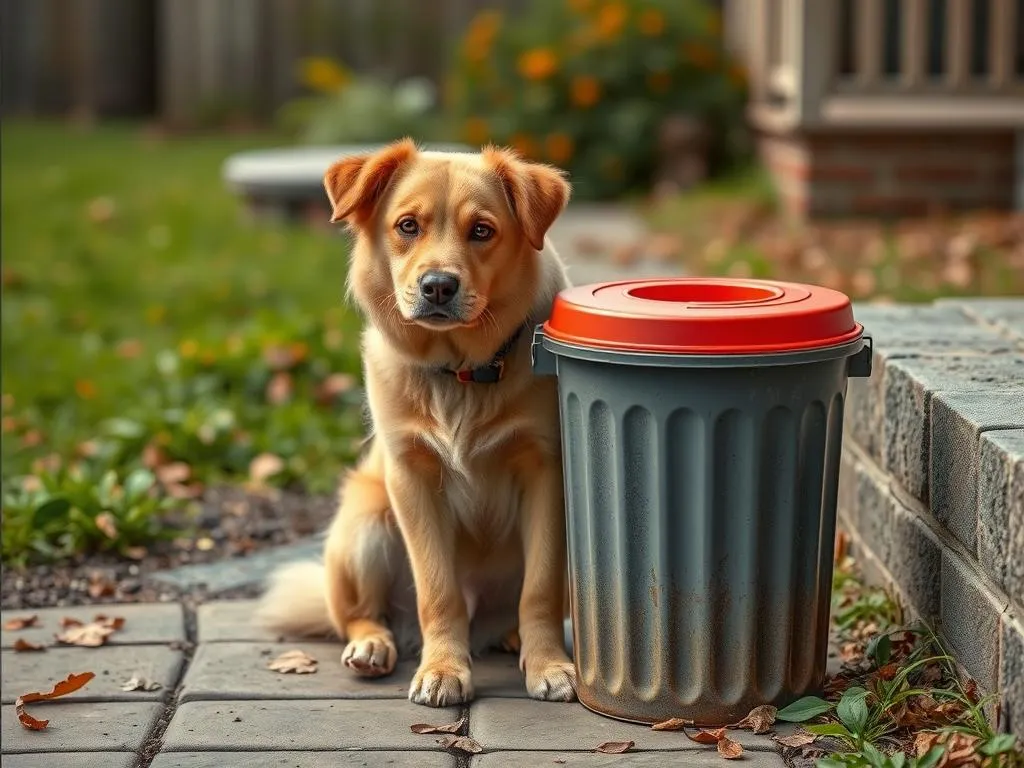
Maintaining a safe environment for dogs is crucial to their overall health and well-being. One often-overlooked aspect of dog health care is the safety of household items, particularly trash cans. Trash cans can be a significant health hazard for dogs, as they often contain items that could lead to serious health issues if ingested. In this article, we will explore effective strategies on how to dog proof your trash can to ensure your furry friend remains safe.
Understanding the Risks
Common Trash Items Dangerous to Dogs
Dogs are naturally curious creatures, and their penchant for exploration can lead them to investigate trash cans. Unfortunately, many common items found in trash cans can pose serious risks to dogs:
- Food scraps: Many food items are toxic to dogs, including chocolate, onions, grapes, and certain bones. Even seemingly harmless leftovers can cause gastrointestinal upset or worse.
- Cleaning products and chemicals: Many household cleaners are toxic to dogs. If ingested, these substances can lead to poisoning or severe health complications.
- Sharp objects: Items like broken glass, sharp utensils, or even tin cans can cause cuts or internal injuries.
- Other hazardous items: Batteries, plastic bags, and other non-food items can also lead to choking, obstruction, or poisoning.
Signs of Ingestion Issues
If a dog does manage to get into the trash and consume something harmful, there are several symptoms to watch for:
- Vomiting: This is often the first sign of ingestion issues.
- Diarrhea: Loose stools can indicate that something is upsetting your dog’s stomach.
- Lethargy: A sudden lack of energy can be a sign of distress.
- Abdominal pain: Dogs may exhibit signs of discomfort, such as whining or an unwillingness to play.
If you notice any of these symptoms, especially after your dog has had access to the trash, it is crucial to seek veterinary help immediately.
Assessing Your Current Trash Setup
Types of Trash Cans
When considering how to dog proof your trash can, it’s essential to understand the different types of trash cans available:
- Open bins: These are the most accessible for dogs. They provide no barriers and can easily be rummaged through.
- Closed bins: These typically feature lids, but not all lids are secure enough to deter a determined dog. Some models come with locking mechanisms that can add an extra layer of security.
Identifying Weak Points
Assessing your current trash setup is vital in identifying weak points that make it easier for dogs to access trash:
- Accessibility for dogs: Consider the height and design of your trash can. If it can be easily tipped over or opened by your dog, it’s not secure enough.
- Placement of trash cans in the home: If your trash can is in a common area, it’s more likely to attract your dog’s attention. Consider relocating it to a less accessible area.
Dog-Proofing Strategies
Choosing the Right Trash Can
When looking to dog proof your trash can, the first step is selecting the right model. Here are some features to look for:
- Height and sturdiness: Choose a heavy-duty trash can that won’t easily tip over.
- Lids: Opt for trash cans with secure lids that lock in place. Some models even feature foot pedals that allow for hands-free operation.
Recommendations for Dog-Proof Trash Can Brands/Models
- Simplehuman Trash Can: Known for its durability and secure lids, this brand offers various sizes and styles.
- Rubbermaid Brute: A heavy-duty option that is difficult for dogs to tip over.
- PetSafe Healthy Pet Gravity Feeder: While not a conventional trash can, this is a great alternative for pet owners looking to manage food waste securely.
Modifying Existing Trash Cans
If you already have a trash can that isn’t dog-proof, there are several modifications you can make:
- Adding locks or latches: Simple locks can keep the lid securely closed and prevent curious noses from prying it open.
- Using bungee cords or straps: These can be used to secure the lid on an open bin, making it more difficult for dogs to access.
- Elevating trash cans out of reach: Consider placing trash cans on countertops or in cabinets where dogs cannot reach them.
Behavioral Training Techniques
In addition to physical barriers, behavioral training can also play a significant role in how to dog proof your trash can:
- Teaching “leave it” and “no” commands: Consistently training your dog to understand these commands can discourage them from approaching the trash.
- Positive reinforcement for correct behavior: Reward your dog when they ignore the trash can, reinforcing good behavior.
- Creating boundaries around trash areas: Use baby gates or other barriers to keep your dog away from the trash area, especially when you are not around to supervise.
Alternative Solutions
Composting and Recycling
In addition to dog-proofing your trash can, consider alternative waste management solutions:
- Benefits of composting for waste management: Composting can reduce the amount of food waste in your trash. This not only minimizes the risk of your dog accessing harmful food scraps but also benefits the environment.
- Safe recycling practices for pet owners: Ensure that recyclable materials are safely stored away from your dog. Items like aluminum cans and glass bottles should be kept in secure containers.
Using Pet-Safe Trash Bags
Another strategy to consider is using pet-safe trash bags:
- Types of bags that deter dogs: Look for scent-proof bags that mask the smell of food, making them less appealing to dogs. Tear-resistant bags can also prevent dogs from ripping them open and accessing the contents.
- Recommendations for brands: Brands like Glad and Hefty offer strong, durable trash bags that can help keep your trash secure.
Monitoring and Maintenance
Regular Trash Checks
Regularly monitoring your trash is essential in preventing dog-related incidents:
- Importance of keeping trash clean and safe: Make it a habit to check your trash regularly to ensure it doesn’t contain harmful items. Dispose of any hazardous materials immediately.
- Routine checks for hazardous items: Establish a routine for checking your trash can, ensuring that nothing dangerous is accessible to your dog.
Engaging Your Dog
Keeping your dog occupied can reduce their curiosity about the trash:
- Providing alternative distractions: Invest in toys, chew items, and puzzles that keep your dog engaged and entertained, making them less likely to explore the trash.
- Keeping dogs entertained to reduce curiosity about trash: Regular exercise, playtime, and mental stimulation can help reduce your dog’s interest in the trash can.
Conclusion
In summary, dog proofing your trash can is a critical step in ensuring a safe environment for your furry friend. By understanding the risks associated with trash cans, assessing your current setup, employing effective dog-proofing strategies, and maintaining regular monitoring, you can significantly reduce the chances of your dog accessing harmful items. Taking proactive measures, such as training your dog and providing engaging alternatives, will not only protect their health but also contribute to a happier, safer home.
By implementing these practical tips, you can create a safer environment for your dog and enjoy peace of mind knowing that your trash can is secure.









